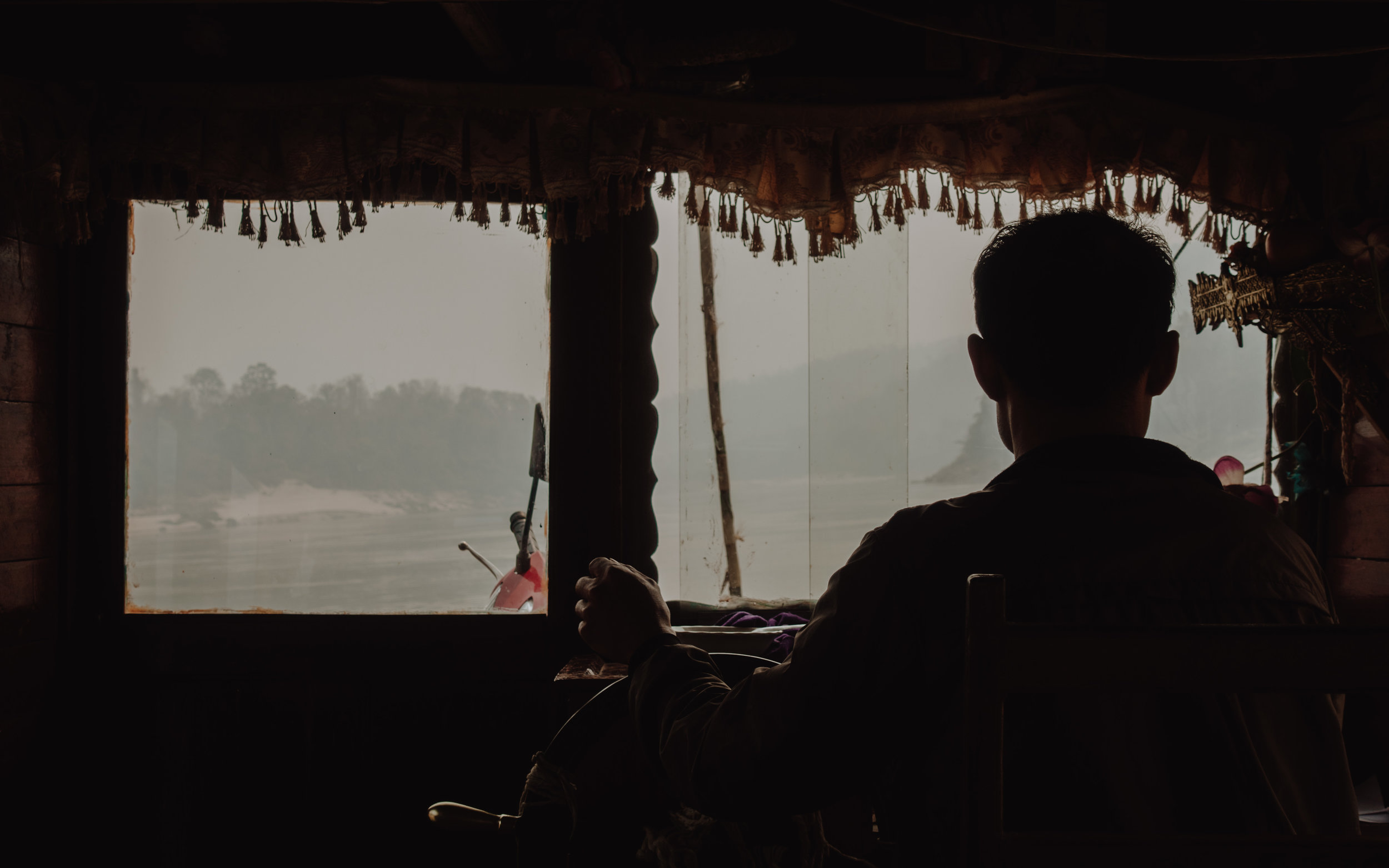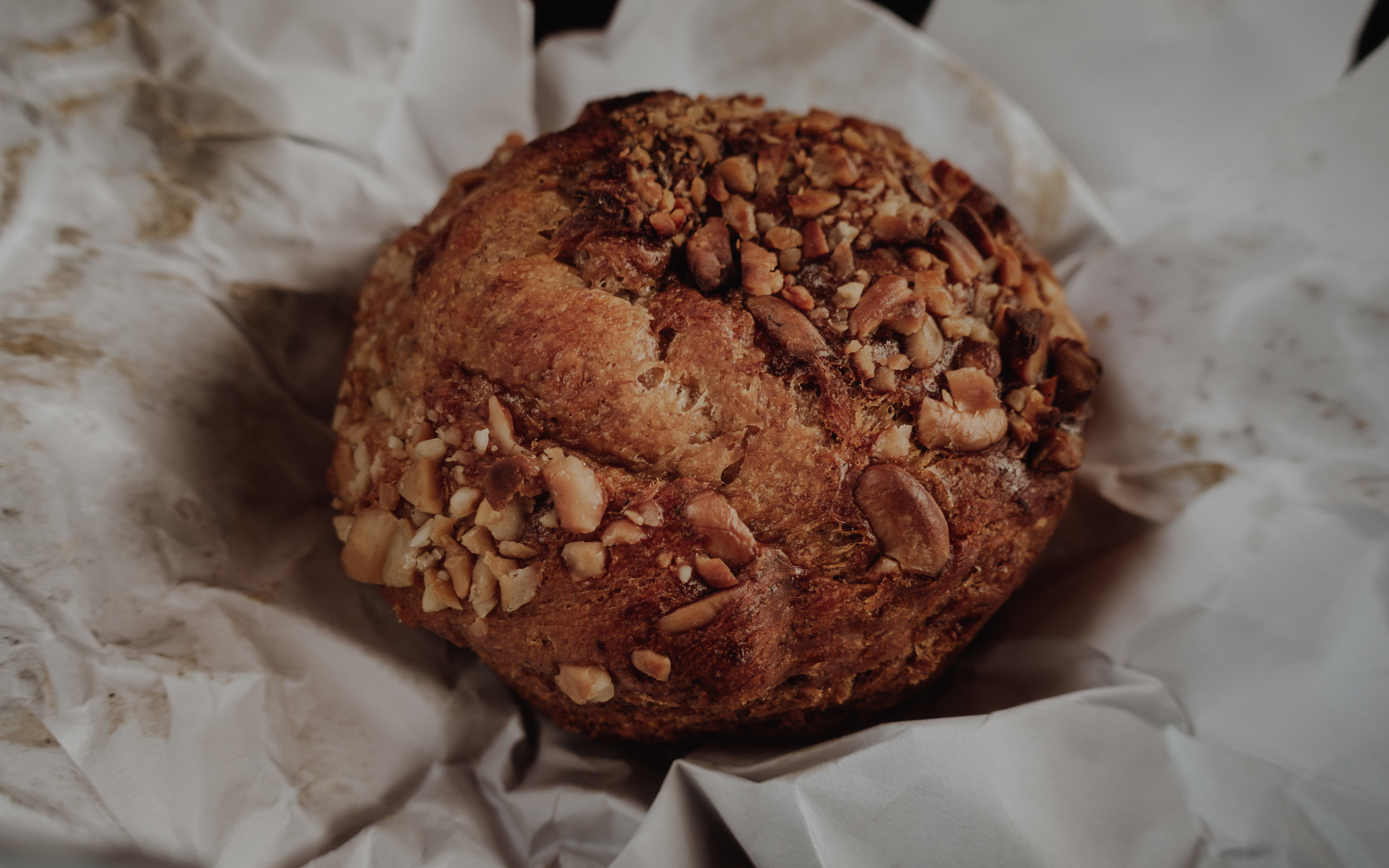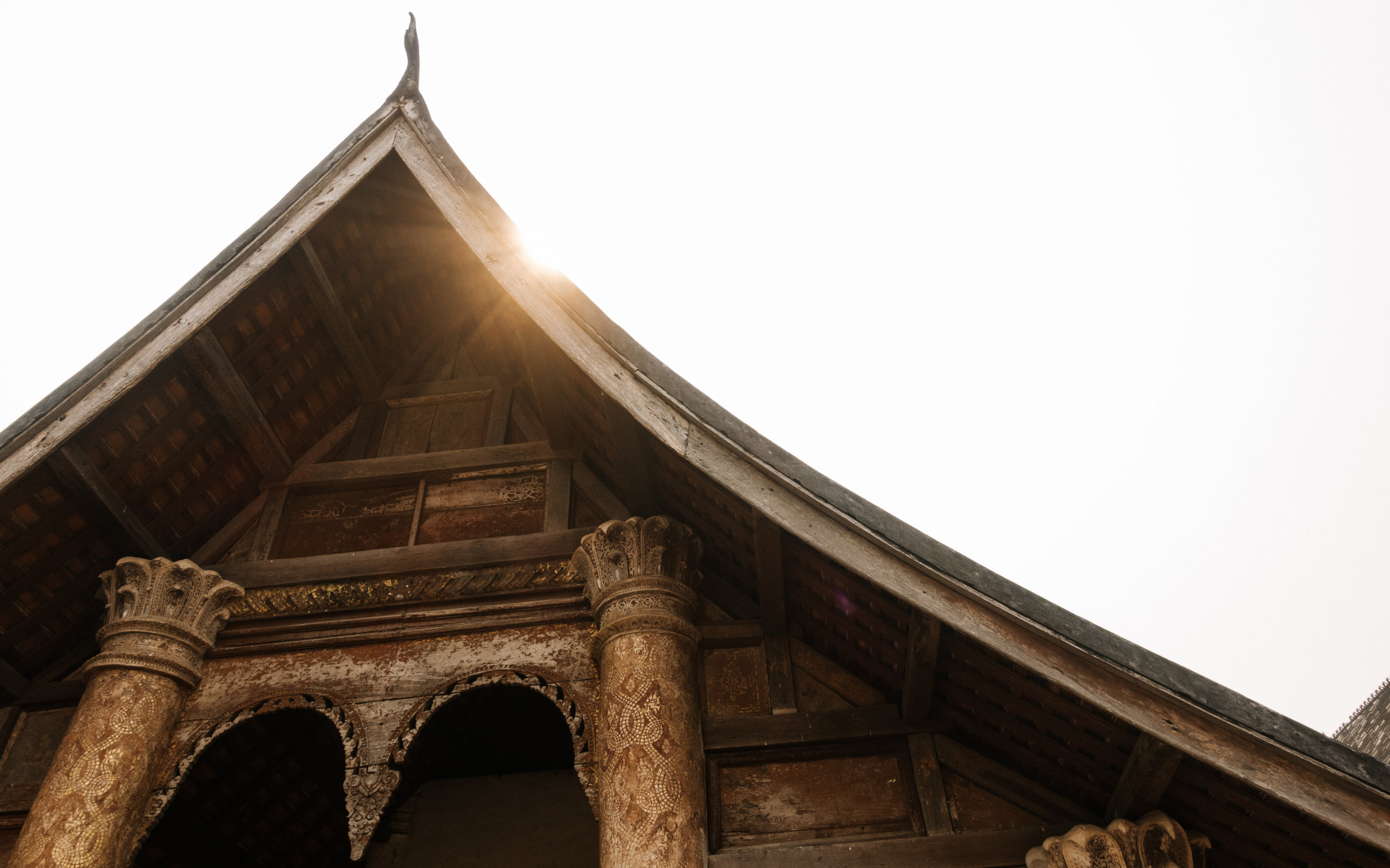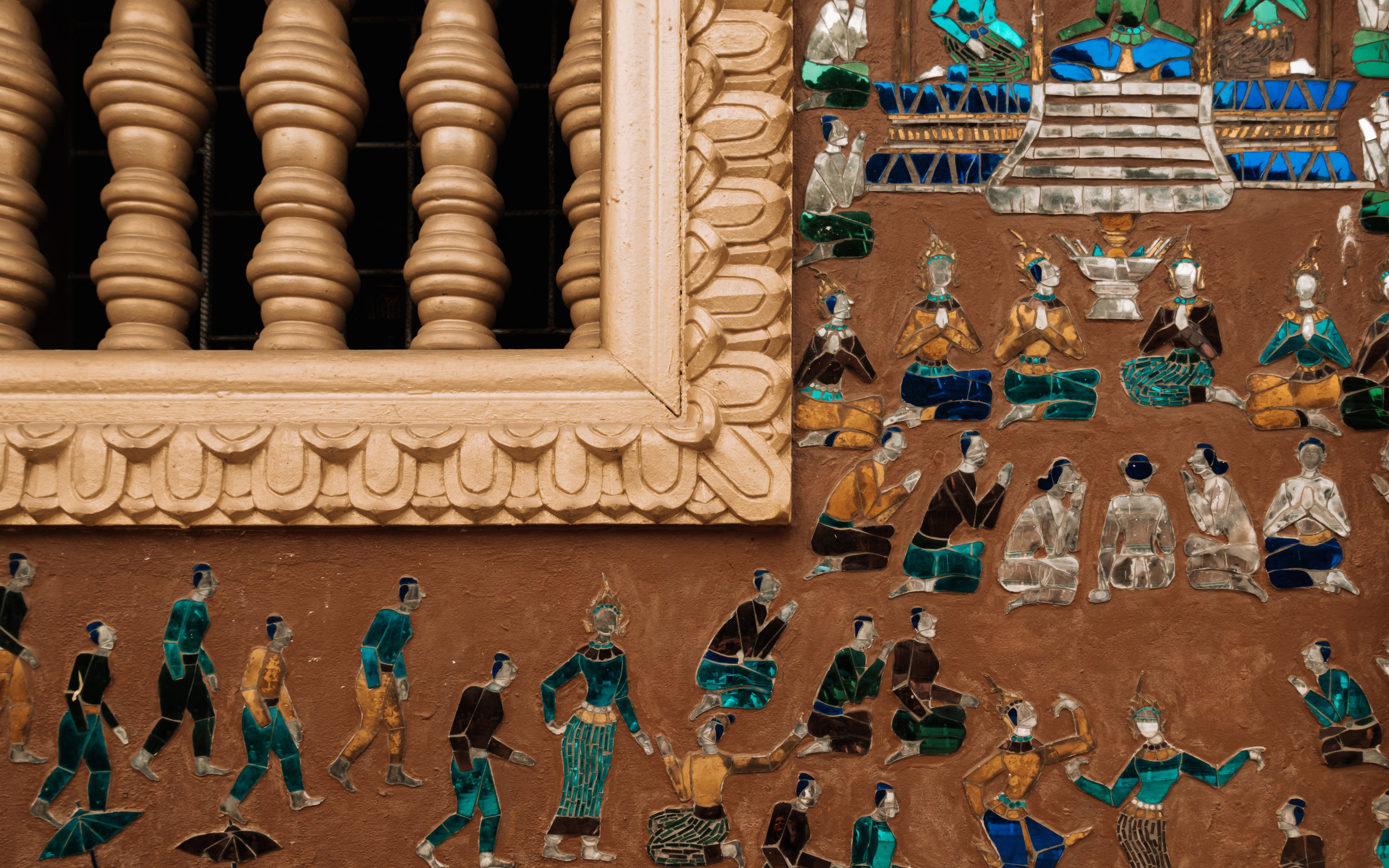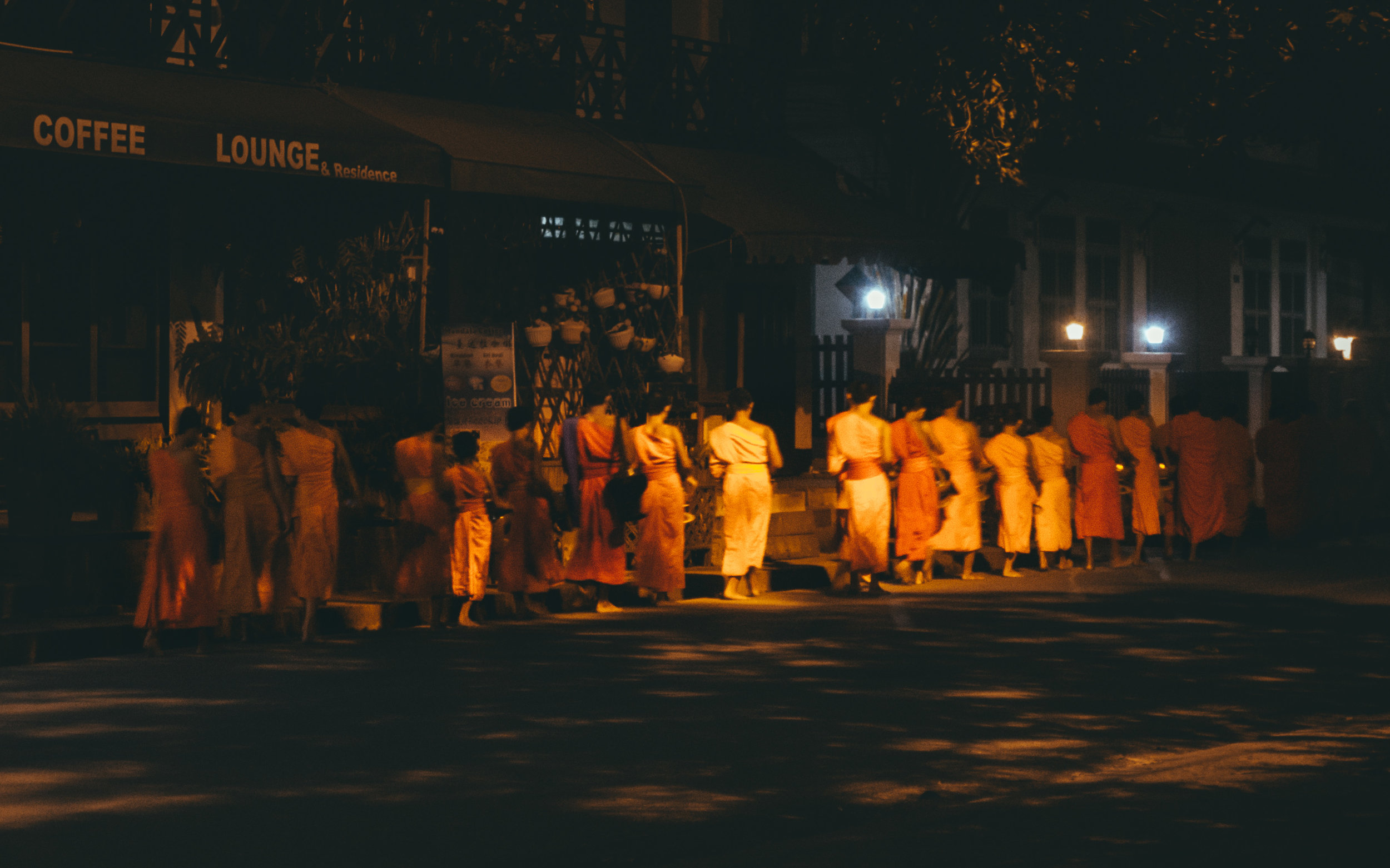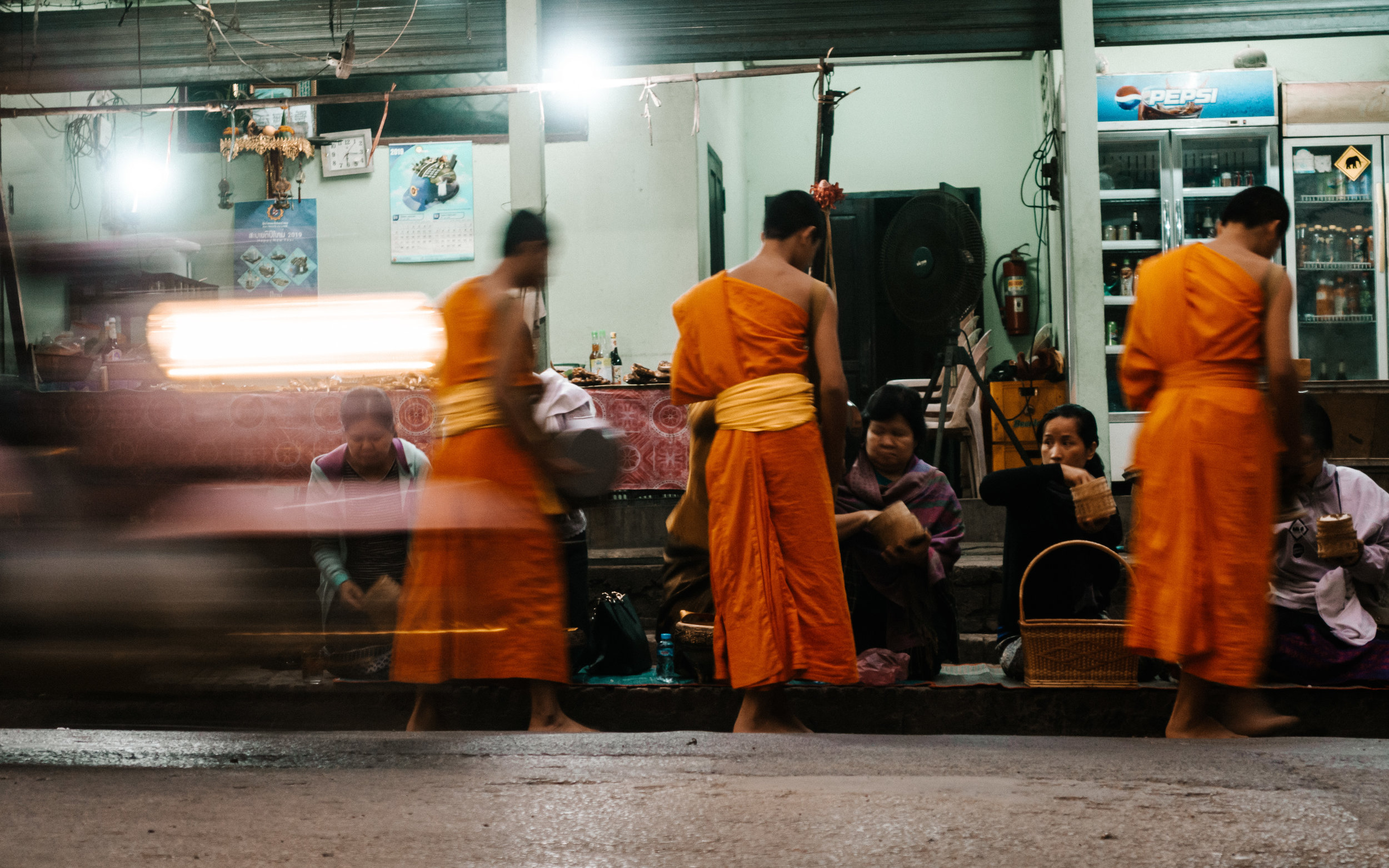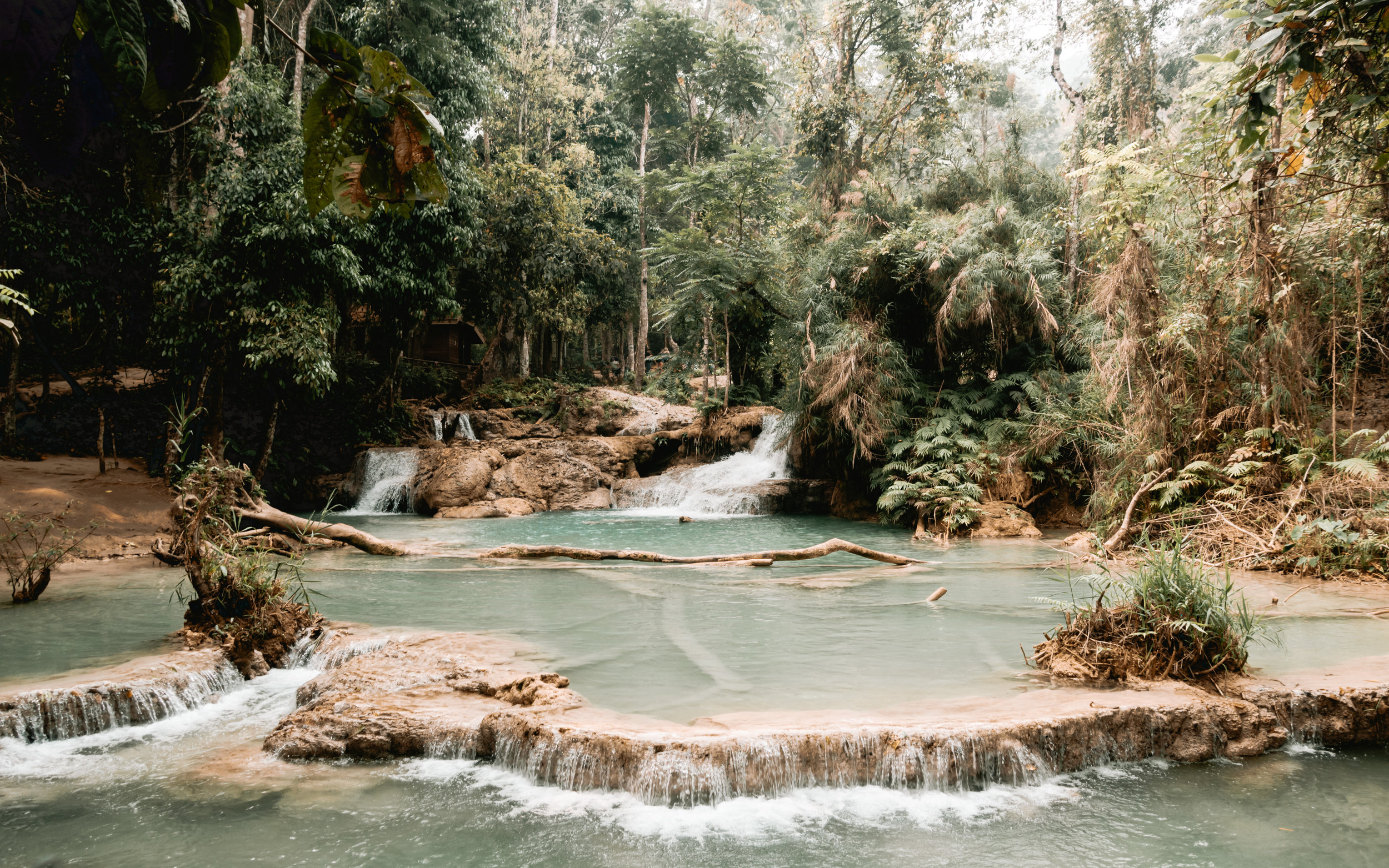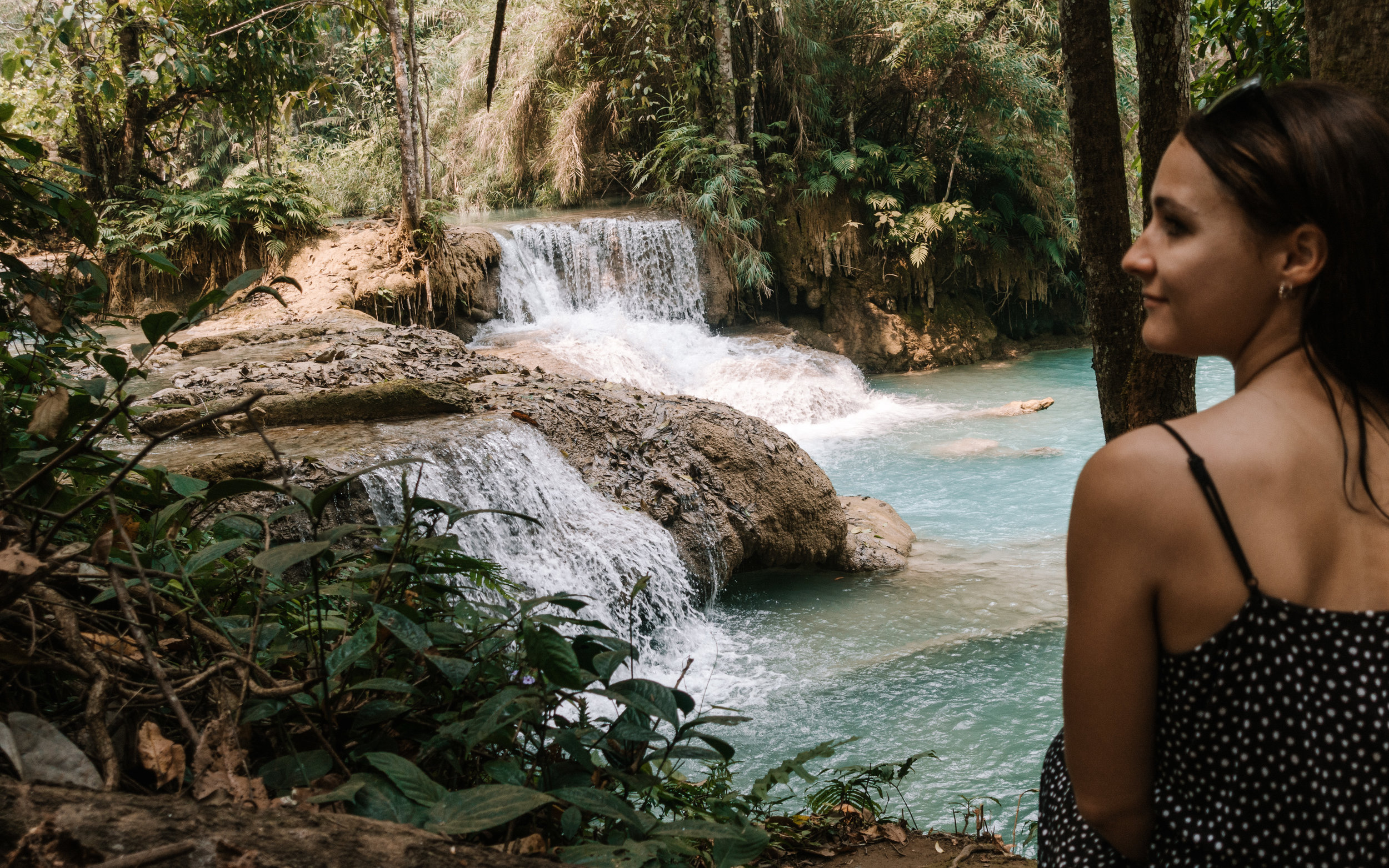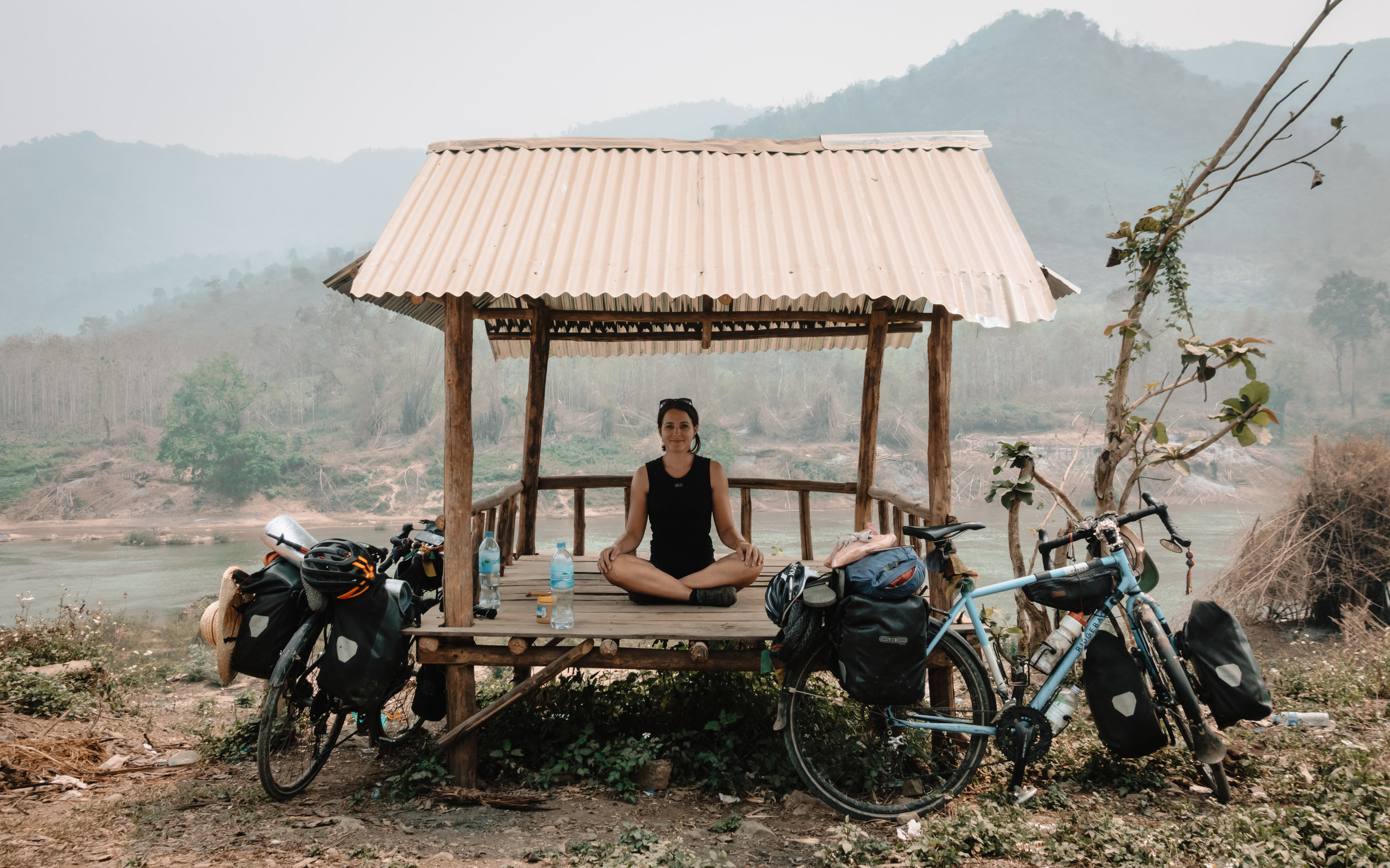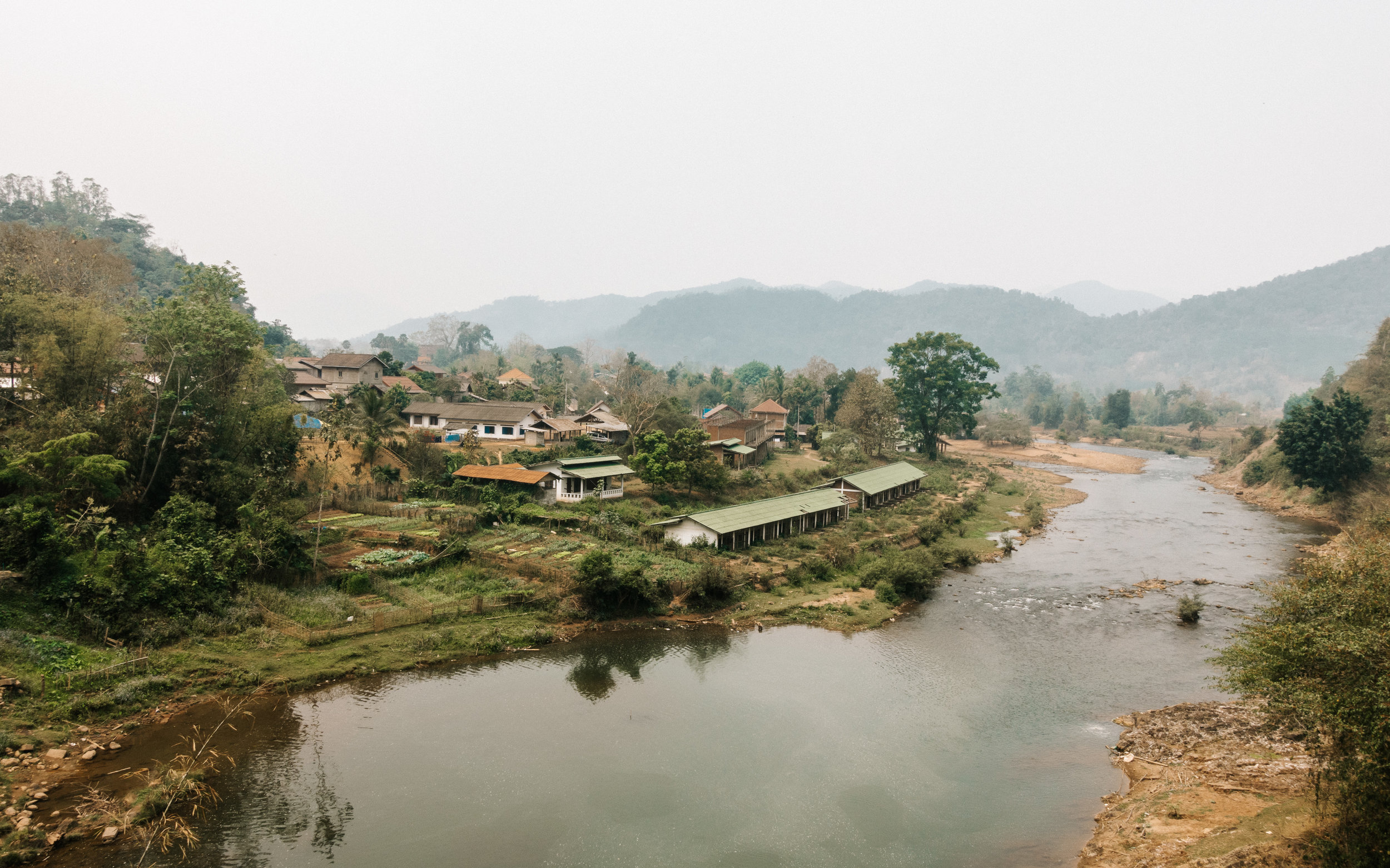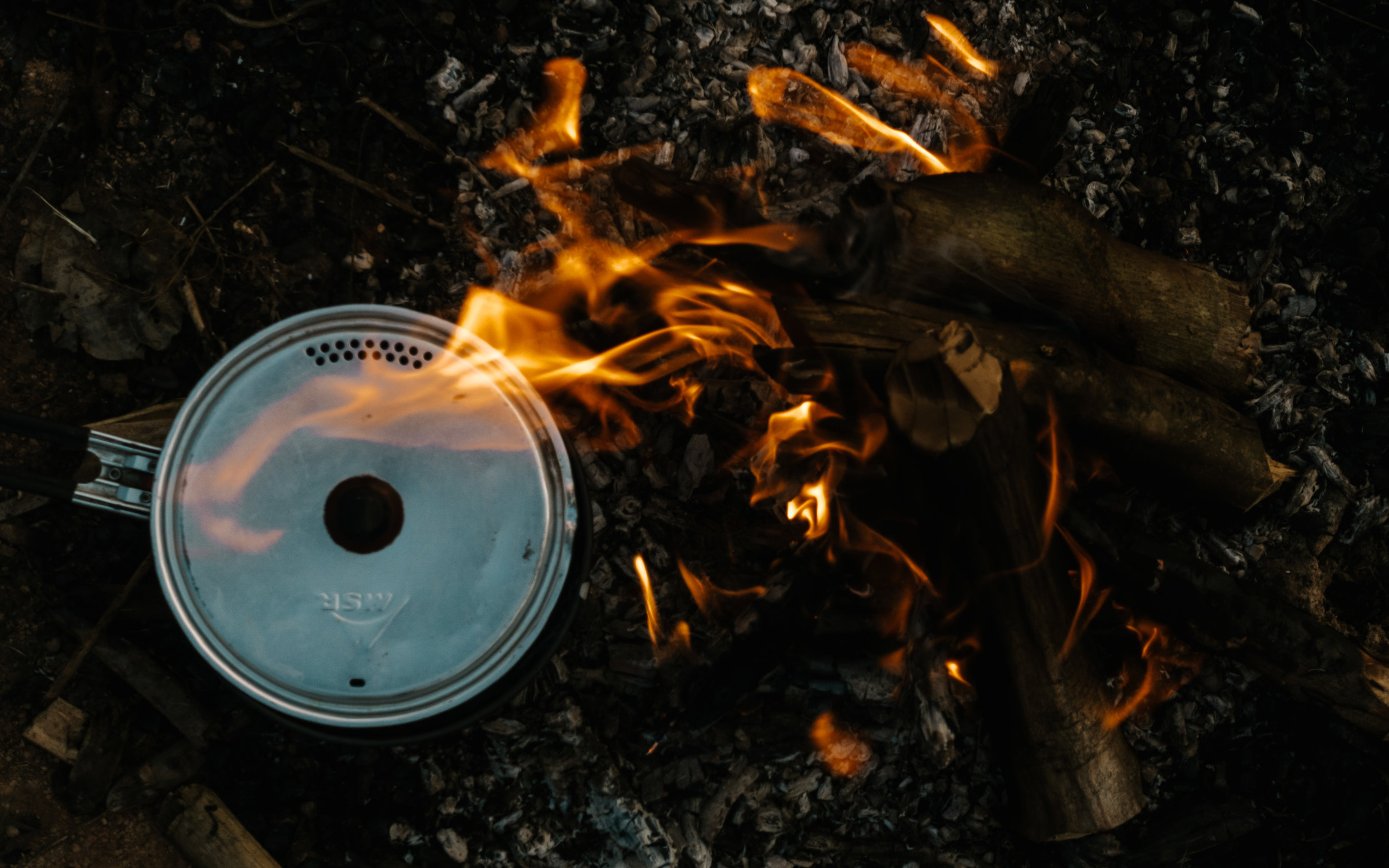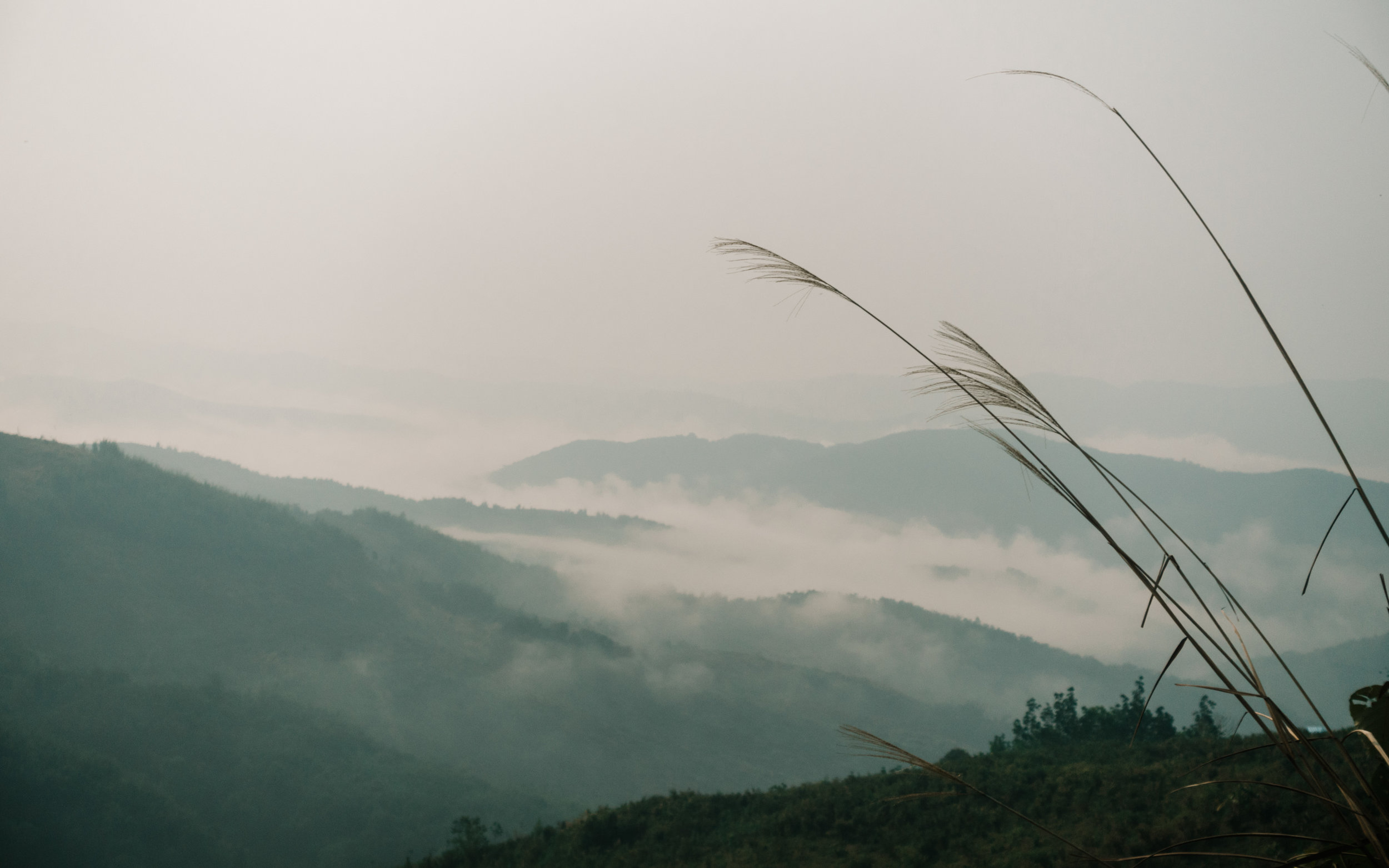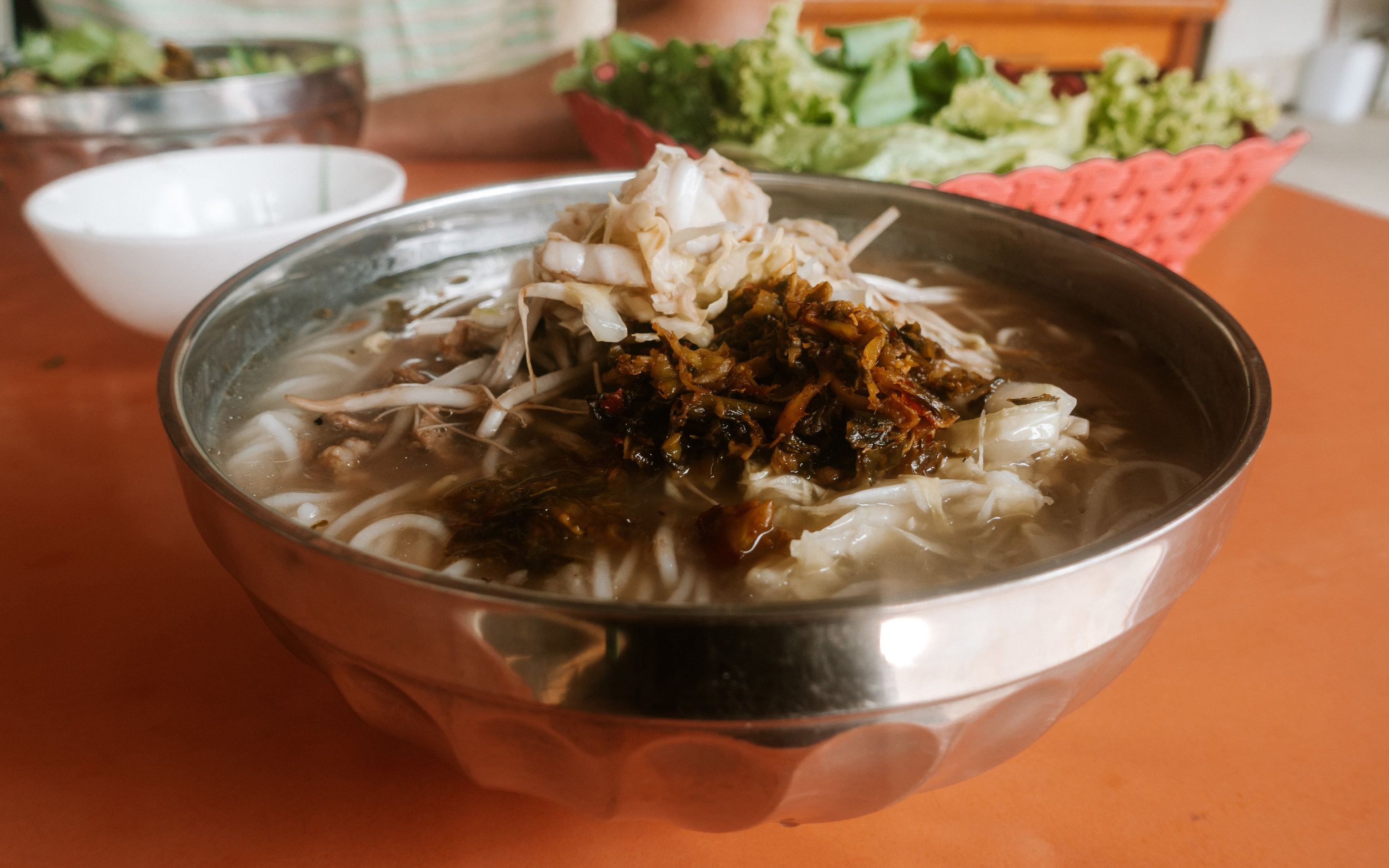This post covers our time journeying down the Mekong river in northern Laos to Luang Prabang, before cycling east towards the Vietnam border, in March.
SUMMARY
Laos is less developed compared to its neighbours. Whilst the road conditions aren’t as good, for the most part we had no trouble. Cycling is a joy: beautiful landscapes, rolling hills and relaxed village life. Fresh food can be more difficult to find in rural areas and a lot of products are imported from other countries, so expect higher prices. Finally, avoid March if possible. During this time, farmers burn back the land so you can expect lots of smoke and ash in the air.
STORY
When fantasising about cycling in South East Asia, Laos isn’t the most obvious country of choice. We’d heard different stories from both cyclists and backpackers, ranging from bad road conditions to extremely hilly terrain. One cycling duo - the legends @TotalBikeForever - then claimed Laos to be the best country to cycle in S.E Asia. We were slightly concerned for our thighs but we knew we had to experience it for ourselves.
The border crossing was easy enough, with a 30 day visa on arrival. The only downside was we had to pay for a coach to take us and the bikes across the bridge. Cycling was not allowed.
The border town of Huay Xai is pretty desolate aside from the boat port and a few decent French restaurants. We devoured the readily-available fresh baguettes (khao gee), having heard so much about them - influence from the French colonial era.
Sunset on the Mekong river
The decision to take the public slow boat to Luang Prabang was an easy one. Not only did it provide a perfect opportunity to experience the mighty Mekong river in true fashion, it also meant some rest off the bikes. We paid only 300,000 kip each (plus 40,000 per bike) which is about £30 for a 2-day boat journey with a lay over in Pakbeng.
We arrived early the next morning to secure the bikes (to the roof of the boat). Gap year travellers made up most of the numbers, heavily ladened with luggage clutching bottles of beer and wearing Chang T-shirt's and/or elephant trousers. Locals made up the rest.
Laoation boy
The boat was slow and peaceful, with many photo opportunities. After a full day on the water, we pulled into Pakbeng around 5pm with local touts waiting to coax people to their hotels. We had to drag our bags and bikes up a steep sandy back (no purpose-built steps or track here). Thankfully a few eager locals helped us with everything, for a tip of course.
Slow boat with bicycles
Pakbeng has a large number of bakeries for its size (and a very good Indian restaurant) but not a huge amount else. The banana muffins were seriously good though.
Banana muffin a la Pakbeng
The second day on the boat was more overcast but just as relaxing. We arrived to our stop around 4:30pm, around 10km outside of Luang Prabang. It’s an extremely long and steep set of steps up to the road - and with bikes, it’s not at all fun. The plus side is you don’t have to pay the obligatory taxi fare to drop you off into town and instead can pedal ahead of the crowd.
Matt taking one for the team
We chose to head straight for the Vietnam embassy to put in our visa application before closing at 5pm. In hindsight this was a mistake and it meant we rushed the application. We also later found out we could have applied for the cheaper e-visa for the land border we had chosen. Over time we’ve learnt to take these things with a pinch of salt. Wasting money and time with visas is frustrating but not worth getting worked up about.
We enjoyed our time in Luang Prabang whilst waiting for our visa to be processed. It’s a very well-maintained town, popular with tourists whilst retaining a local feel. We sampled coconut pudding pancakes and the all-you-can-eat veggie buffet at the relaxed night market. Students hang around their to practice their English with the tourists and we were more than happy to oblige.
Veggie all-you-can-eat buffet
I woke early one morning and wandered into the town whilst it was still dark to observe the Alms ceremony (Tak bat). It can get overcrowded with ignorant tourists so I made sure to find a quiet spot and remain inconspicuous and respectful.
Later that day we had the chance to meet up with another cycle tourer for a drink, Yorkshireman James and his girlfriend Johanna. They’re planning to cycle the America’s together later this year and we are very jealous. You can check them out here.
Tak Bat, Morning Alms ceremory
Next on our tourist agenda was the popular Kuang Si waterfalls. In the taxi on the way we saw lots of Western tourists stopping to photograph fields of crops (lettuce, cabbage, etc). It struck me that we’ve become so disassociated with real food production that we find it charming to see food growing in fields.
The waterfalls were of course touristy but extremely beautiful and mystifying.
Kuang Si waterfalls
After two days off the bikes, we collected our Vietnam visa and set off east into the hills. Our apprehension of cycling here quickly subsided and we fell quickly in love. It turns out Laos is a cyclists paradise: beautiful scenery, gentle hills and humble village life. Relaxed locals greet you as you pass and there is a whole host of activity to keep you entertained: traditional fishing in the rivers, bathing water buffalo, kids waving enthusiastically, fabric weaving, corn and seaweed drying, lots and lots of laundry, karaoke machines in use at all hours, naked women washing confidently in plastic paddling pools and kids playing, whilst piglets and chickens run riot.
Grazing water buffalo
The downside to visiting Laos this time of year, particularly the north east, is the burning back of fields and forests to grow more crops. This is illegal (deforestation, of course) but the country is under pressure from increasing demand of the Chinese market. Some stretches were so bad we had to cover our faces to avoid the smoke and ash.
Burning back the land
A powerful thing I thought whilst rolling easily through Laos was how at ease I felt in the saddle. A smile gets you a long way here too. During our short time here, Laos presented itself as a calm place. Laotians live a simple and humble life, living closely with nature. Even their buildings appear to touch the earth lightly.
Sadly, Laos is the most heavily bombed country in history relative to its size. We cycled past many large ponds which on first glance appear manmade for fishing purposes but are in fact water-filled bomb craters. It is bittersweet that much of land here has remained largely undeveloped due to the dangers unexploded bombs present.
Village life
Our final night here was spent wild camping just outside a small village on the hillside overlooking breathtaking wilderness. It became quickly apparent that this spot was where locals collect their fire wood. Laughing kids hung around, slowly chopping wood, to watch us set up camp. That night we made a camp fire with the abundant fire wood and used it to cook dinner and bake our second loaf of bread. Later we experienced the worst storm of the trip, complete with hail stones so big I’m surprised they didn’t puncture the tent.
Camp fire
The next morning we headed upwards toward the border. This was to be our final climb in Laos before entering Vietnam and by this point our legs were screaming for a day off. The climb was long and humid but as always, we made it eventually. Matt was waiting for me in a shack at the top. We ordered a bowl of Maggi noodles to use up our currency before crossing the border. Vietnam awaits...B
_____________________________
Current Stats (as of 20.03.19)
Total days cycled: 195/289
Total rest days: 94
Total distance completed: 12,865 Km
Favourite animal: Water buffalo
-
April 2019
- Apr 26, 2019 Biking across North Thailand Apr 26, 2019


















